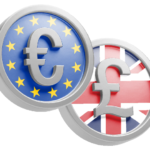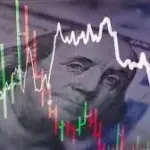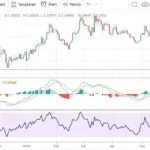In the world of foreign exchange (forex), central banks play a crucial role in shaping currency values and driving market volatility. Every policy announcement, interest rate change, or even a subtle shift in tone from a central banker can send ripples through global currency markets. Understanding how these decisions influence forex volatility is key for traders and investors aiming to anticipate market movements.
1. The Power of Central Banks in Currency Markets
Central banks are the primary institutions responsible for a country’s monetary policy. Their main objectives are to maintain price stability, control inflation, and support economic growth. To achieve these goals, they adjust monetary tools such as:
- Interest rates – The most direct way to influence currency value.
- Open market operations – Buying or selling government securities to control money supply.
- Foreign exchange interventions – Buying or selling their own currency to stabilize exchange rates.
These actions can either strengthen or weaken a currency, depending on how markets interpret the bank’s intentions.
2. Interest Rate Decisions: The Key Driver of Forex Volatility
When a central bank raises interest rates, it typically signals confidence in the economy and attracts foreign investment seeking higher returns—thus boosting the currency. Conversely, rate cuts often indicate economic slowdown, reducing investor appetite and weakening the currency.
For example:
- A rate hike by the Federal Reserve (Fed) often strengthens the U.S. dollar as investors flock to USD-denominated assets.
- A rate cut by the European Central Bank (ECB) can weaken the euro as lower yields make the currency less attractive.
The anticipation of these changes often causes more volatility than the decision itself, as traders position their portfolios ahead of announcements.
3. Quantitative Easing and Tightening Policies
Beyond traditional interest rate adjustments, central banks sometimes use quantitative easing (QE)—buying assets to inject liquidity into the economy. While this helps stimulate growth, it can also lead to currency depreciation due to an increased money supply.
Conversely, quantitative tightening (QT)—the gradual unwinding of these measures—tends to have the opposite effect, often strengthening the currency as liquidity is reduced.
For instance, the Fed’s QE programs after the 2008 financial crisis led to a prolonged period of dollar weakness, while its later shift to QT in 2017–2018 contributed to a stronger dollar.
4. Forward Guidance and Market Expectations
Even without changing rates, central banks can cause major market movements through forward guidance—statements about future policy direction. Traders scrutinize every word from central bankers, such as the Fed Chair or ECB President, for clues about upcoming actions.
Phrases like “data-dependent” or “higher for longer” can trigger significant volatility as markets reassess interest rate expectations. Sometimes, the tone of a speech moves markets more than the actual policy itself.
5. Global Interdependence and Diverging Policies
In today’s interconnected world, the decisions of one central bank often affect others. For example, if the Fed tightens while the Bank of Japan maintains ultra-loose policy, the USD/JPY pair can experience sharp volatility as investors exploit yield differentials.
Similarly, diverging policies between the ECB and Bank of England can cause large swings in EUR/GBP, especially during periods of economic uncertainty or inflation divergence.
6. Case Study: The Fed’s 2022–2023 Tightening Cycle
During 2022 and 2023, the Federal Reserve embarked on one of its most aggressive rate-hiking campaigns in decades to combat inflation. The result?
- The U.S. dollar surged against most major currencies.
- Emerging market currencies suffered as investors withdrew funds in search of higher U.S. yields.
- Forex volatility spiked, creating both risks and opportunities for traders.
This episode demonstrates how central bank actions can reshape global currency flows in a matter of months.
7. Strategies for Traders During Central Bank Events
Forex traders often prepare for volatility around key central bank announcements such as the FOMC, ECB, or BoE meetings. Common strategies include:
- Avoiding high leverage before announcements to manage risk.
- Using stop-loss orders to protect against sharp price swings.
- Trading news reactions, focusing on how actual decisions differ from market expectations.
Knowledge of central bank behavior helps traders navigate these volatile periods more effectively.
Conclusion: Central Banks as the Pulse of Forex Volatility
Central bank decisions are among the most influential forces in the forex market. From interest rate changes to policy guidance, every move can trigger significant volatility and reshape investor sentiment. For traders, keeping a close eye on monetary policy trends—and understanding how markets interpret them—is essential to staying ahead in the fast-moving world of forex.















